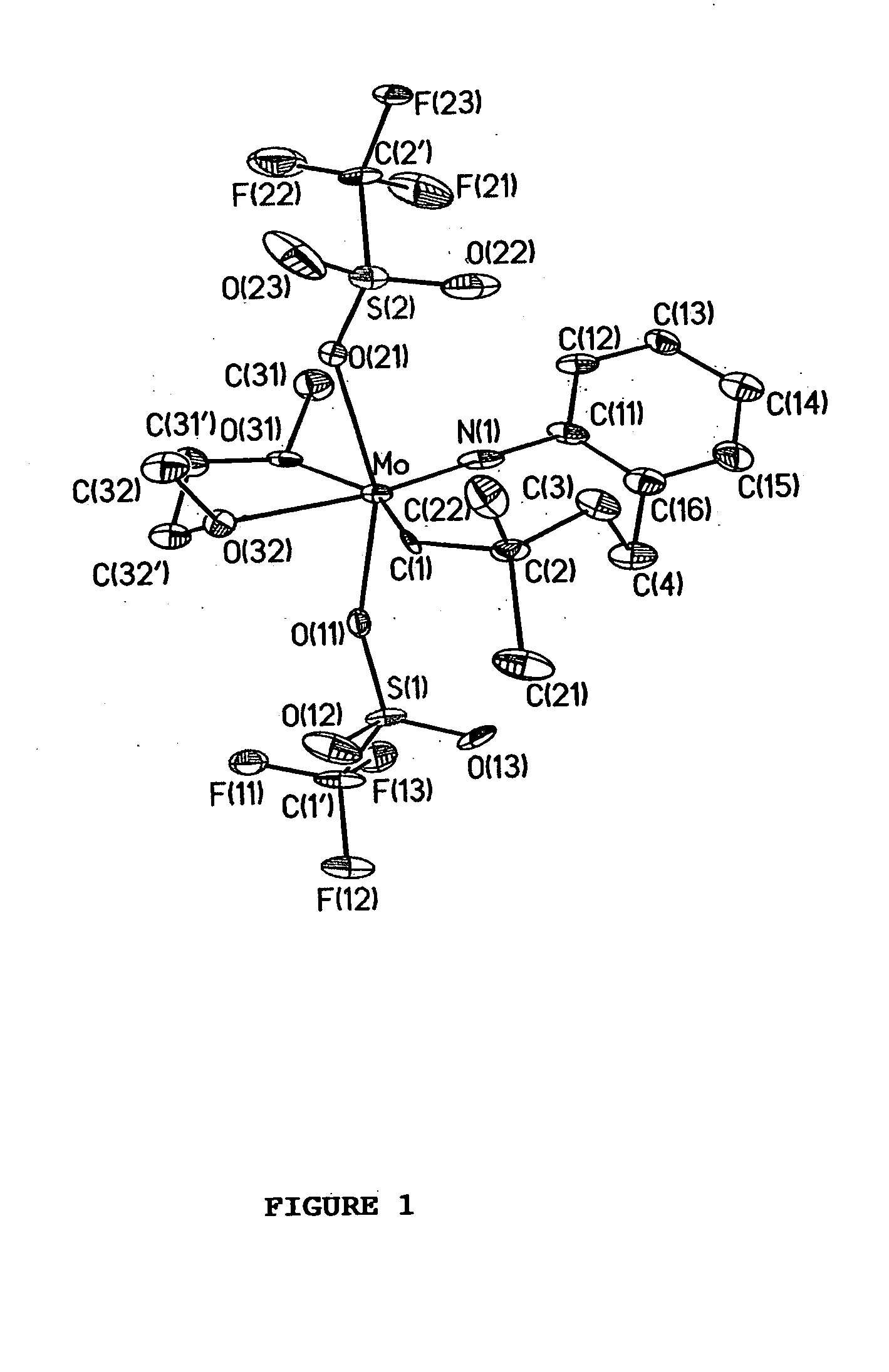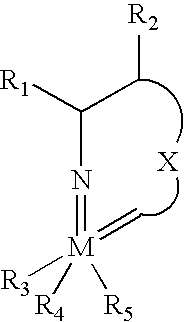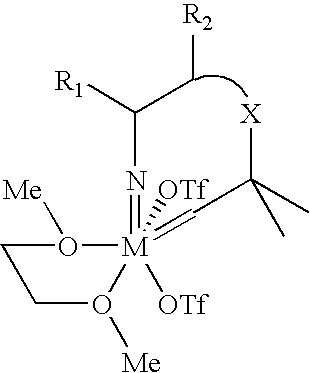Imido-tethered carbenes of molybdenum for ring-opening metathesis polymerization and ring-closing metathesis
a technology of cyclooligomerization and tethered carbenes, which is applied in the direction of organic compound/hydride/coordination complex catalysts, physical/chemical process catalysts, diaryl/triaryl methane dyes, etc., can solve the problems of unreusable catalysts and the reaction in which these catalysts are supported on a solid substrate is less economically viable for many commercial applications than if they were reusabl
- Summary
- Abstract
- Description
- Claims
- Application Information
AI Technical Summary
Problems solved by technology
Method used
Image
Examples
example 1
[0070] Details for the synthesis of 2-(3,3-dimethylpent -4-enyl)aniline (4).
Preparation of 2-(3,3-dimethylpent-4-enyl)nitrobenzene: In a flask, was loaded fuming HNO3 (18.7 mL, 90%, d=1.5), HOAc (18 mL), Ac2O (14 mL), which was allowed to cool back to room temperature before proceeding. This solution was added dropwise to 3,3-dimethyl-5-phenyl-1-pentene (45.8 g, 0.263 mol), which was prepared using the procedure of Reike and coworkers referenced as 12 in the manuscript, in Ac2O (120 mL). The reaction was kept between 0 and −5° C. during the addition. After the addition, the mixture was stirred at 0° C. for 12 h. The reaction mixture was poured into crushed ice (300 g) The product was extracted with ethyl ether (3×200 mL) and the combined organic layers were washed with portions of saturated NaHCO3 (˜300 mL total) until no gas formed on addition of the basic aqueous solution. The organic solution was filtered, and the separated solids were washed with ether (50 mL). The combined a...
example 2
[0082] This example illustrates the synthesis of a supported catalyst comprising the catalyst of the present invention. The process produces a bidentate phenol supported on styrene and then in a two-step reaction replaces the dialkoxide of compound 7 with the bidentate biphenol supported on styrene. The process follows the synthetic pathway described in Hultzsch et al. in Angew. Chem. Int. Ed. 41: 589-593 (2002) for supporting chiral molybdenum-based catalysts on styrene.
[0083] The process is illustrated in scheme 3.
[0084] Using the process described in Alexander et al. in J. Am. Chem. Soc. 120: 4041-4042 (1998), 3,4-dimethylphenol is alkylated in a closed reaction. The 3,4-dimethylphenol is placed in a container containing 1.5 g H2SO4 and purged with isobutylene. The mixture is then place under an isobutylene atmosphere at about 20 psi (1.40614 kgf / cm2) and then heated at about 70° C. until the liquid ceases to expand (about 3 hours). The reaction is then cooled, EtO2 is added, ...
PUM
| Property | Measurement | Unit |
|---|---|---|
| enantiomeric excess | aaaaa | aaaaa |
| temperature | aaaaa | aaaaa |
| temperature | aaaaa | aaaaa |
Abstract
Description
Claims
Application Information
 Login to View More
Login to View More - R&D
- Intellectual Property
- Life Sciences
- Materials
- Tech Scout
- Unparalleled Data Quality
- Higher Quality Content
- 60% Fewer Hallucinations
Browse by: Latest US Patents, China's latest patents, Technical Efficacy Thesaurus, Application Domain, Technology Topic, Popular Technical Reports.
© 2025 PatSnap. All rights reserved.Legal|Privacy policy|Modern Slavery Act Transparency Statement|Sitemap|About US| Contact US: help@patsnap.com



